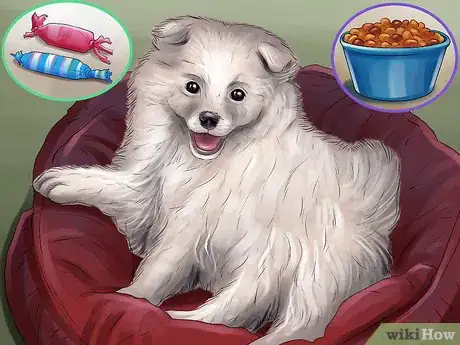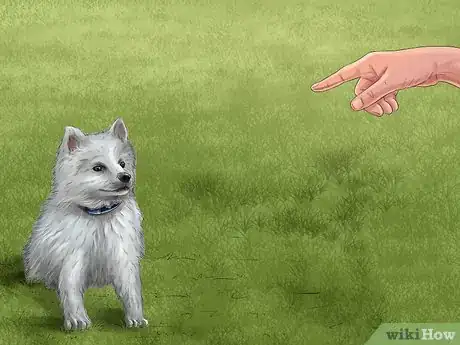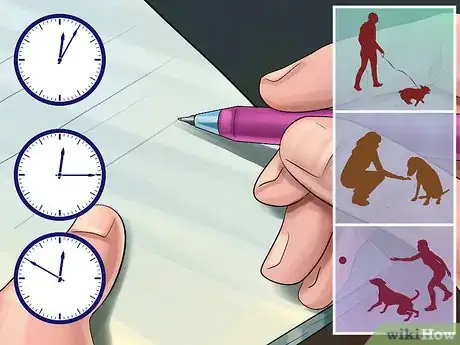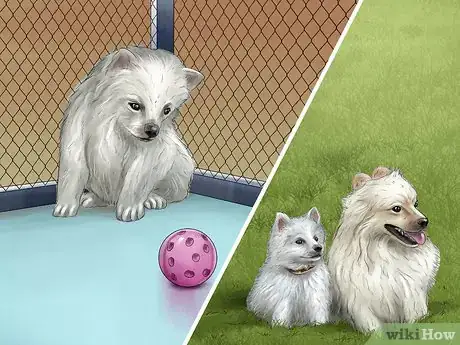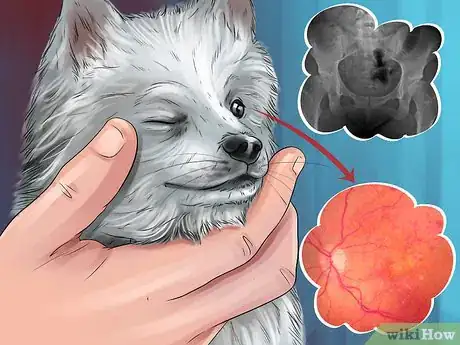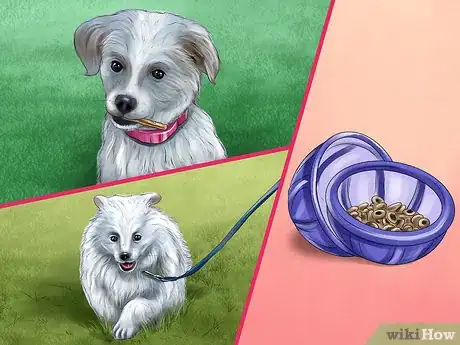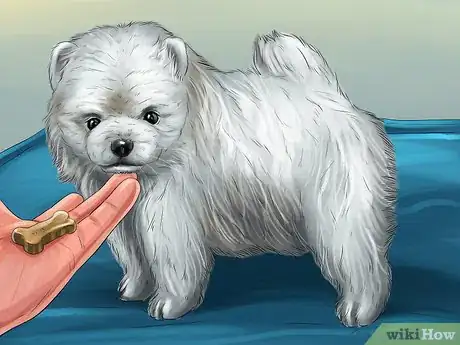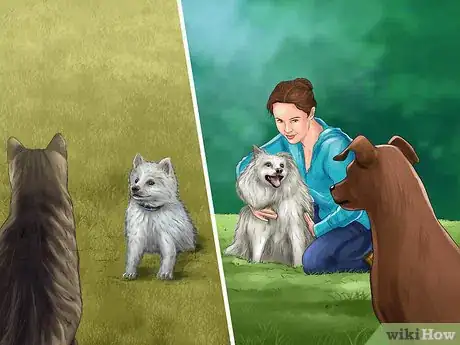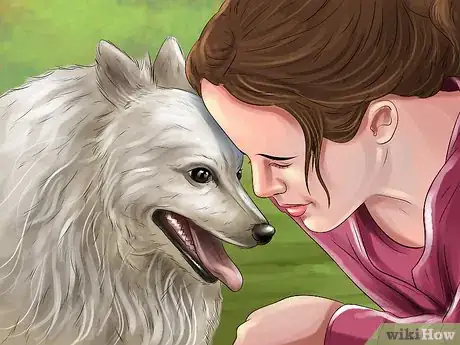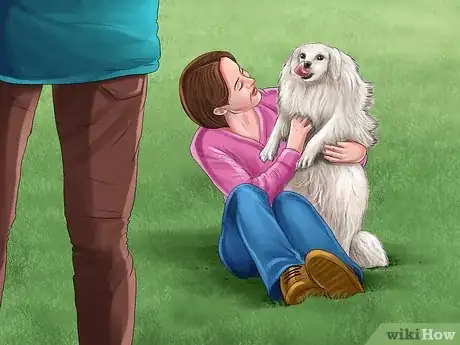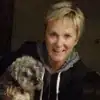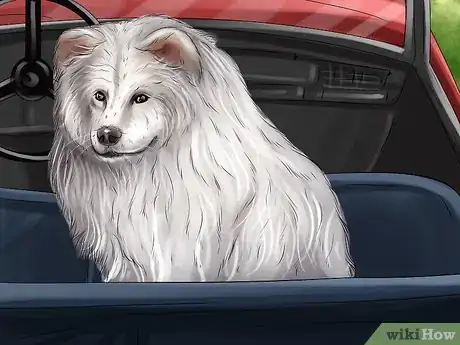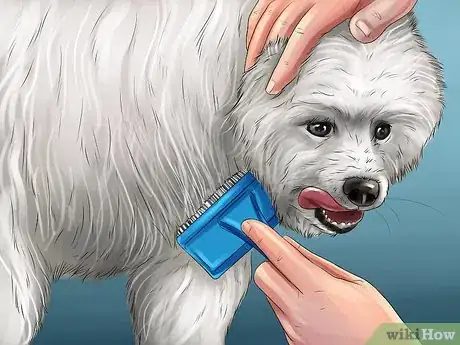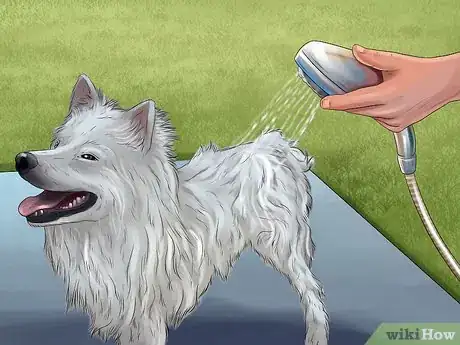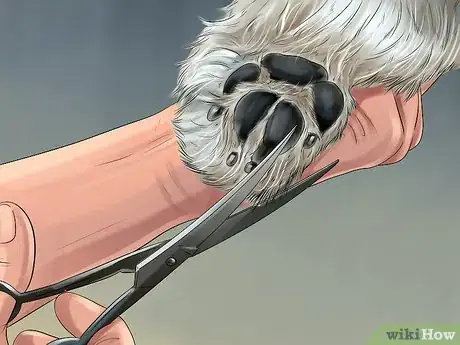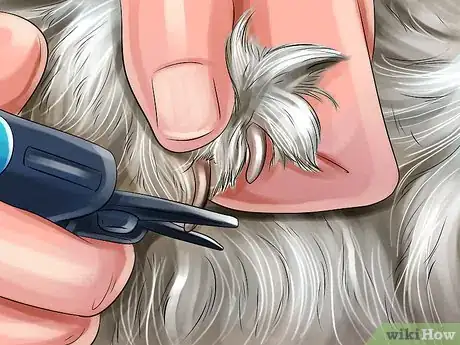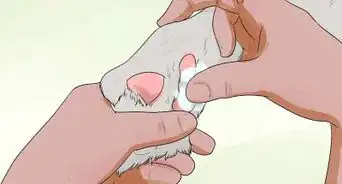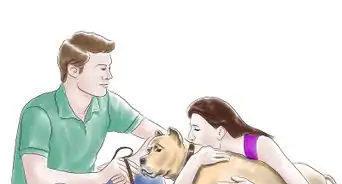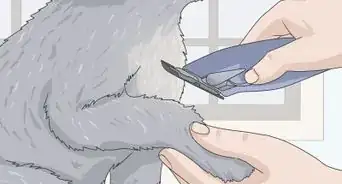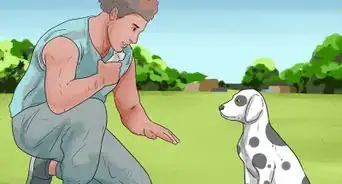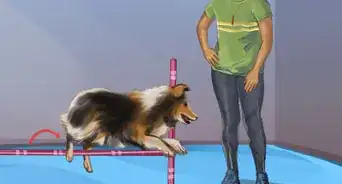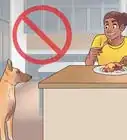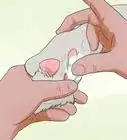This article was co-authored by Beverly Ulbrich. Beverly Ulbrich is a Dog Behaviorist and Trainer and the Founder of The Pooch Coach, a private dog training business based in the San Francisco Bay Area. She is a Certified CGC (Canine Good Citizen) Evaluator by the American Kennel Club and has served on the Board of Directors for the American Humane Association and Rocket Dog Rescue. She has been voted the best private dog trainer in the San Francisco Bay Area 4 times by SF Chronicle and by Bay Woof, and she has won 4 "Top Dog Blog" awards. She has also been featured on TV as a dog behavior expert. Beverly has over 18 years of dog behavior training experience and specializes in dog aggression and anxiety training. She has a Master of Business Administration from Santa Clara University and a BS from Rutgers University.
There are 28 references cited in this article, which can be found at the bottom of the page.
This article has been viewed 40,167 times.
The American Eskimo dog, also known as an “Eskie,” requires its own unique care. This is especially true if you are adopting a puppy. From the beginning, you should provide a safe, structured home for your Eskie. A good diet and frequent exercise will keep them healthy. Eskies are known to be extremely loyal to their families, but if you do not socialize them as puppies, they may become shy or aggressive around strangers. Their long, white coats also require frequent grooming. With some love, care, and attention, your Eskie will grow to be a beloved member of the family.
Steps
Bringing Your Puppy Home
-
1Allow them to live inside. The American Eskimo dog was bred as a house dog, and thus is not suited to living outdoors. Your puppy should have a comfortable home inside with a bed, toys, and an easily accessible food bowl.[1]
-
2Start training immediately. While you may think your puppy is too young to begin training, young puppies actually respond well to early training. If you wait until your Eskie is six months old, they may have already developed bad behaviors.[4] Fortunately, Eskies are known to learn commands quickly, and they are considered to be among the most easily trained of all dog breeds.[5]
- You might consider taking your Eskie to puppy training school. Going to training school with them can help bond you with your puppy, and it will teach your puppy how to act around other humans and dogs.[6] Puppies can start these classes at around seven weeks old.
Advertisement -
3Set a schedule. Puppies can learn the household rules early if you set a consistent schedule for them. You should keep a schedule for feedings, walks, playtime, naps, and bathroom breaks. By feeding them and walking them at the same time every day, they will learn to expect these things at specific hours, and they will be less anxious or destructive during other periods of the day.[7]
-
4Confine the puppy when you are not home. Puppies can be destructive while they are not supervised, and they may be prone to separation anxiety. To prevent damage to your house or harm to your puppy while you are away, you should confine them in a room or crate. Make sure they have water, toys, and a bed to keep them busy. You may also want to put down newspapers in case they have an accident.
- You may want to consider crate training your puppy. Not only will this help you confine your puppy while you are out but it provides a safe, personal den for your puppy. Puppies under six months old should not be in the crate for longer than three or four hours, however.
- You should also confine your puppy in a room or crate at night. Understand that very young puppies may not sleep through the night. You might have to wake up to walk the puppy. Your puppy should be able to sleep through the night at three or four months old.[8]
- If you are gone for longer than four hours a day, you should have a friend, family member, or dog sitter come by to take your puppy out for bathroom breaks and play. Puppies should not be left alone for long periods.[9]
Keeping Your Eskie Healthy
-
1Find a reliable vet. Your Eskie will require medical checks and care throughout their life. When you first bring your puppy home, you should take them to a vet to be screened for any potential health problems. Fortunately, Eskies are known as healthy dogs with relatively few problems. Be aware that certain health issues may not become apparent until your puppy is fully grown. Some of the diseases that eskies may be susceptible to include:[10]
- Progressive Retinal Atrophy (PRA) is a hereditary disease that causes gradual vision loss in dogs. In some cases, it can appear as early as six months in a puppy.[11]
- Hip dysplasia is a deformity that can cause arthritis or joint disease in dogs. Affected dogs may start limping or losing their balance.[12]
- Pyruvate kinase deficiency is an enzyme deficiency that can cause anemia in dogs. Symptoms include weakness, heart murmurs, or lethargy.
-
2Exercise your puppy. If your puppy does not get enough exercise, they may start to engage in destructive behaviors, such as hyperactivity or chewing furniture. To make sure that your puppy is getting plenty of physical and mental activity, you should take them on walks and play with them throughout the day.
- You can play fetch, tug-of-war, or hide and seek with your puppy to help exercise them.
- Give your puppy lots of toys to play with while you’re gone. Puppies love to chew toys, such as stuffed animals or rubber balls. You can also fill a toy with kibble or peanut butter, and let them lick it out
- Puppies should be walked at least twice a day. Since dogs are most active at dawn and dusk, these may be the best times to walk your puppy.[13]
-
3Feed them several times a day. For the first year, your Eskie should be eating food that is specially formulated for puppies. These varieties can be found wherever you purchase normal dog food. Puppies need to be fed four meals a day. This can be reduced to three meals by the time they are twelve weeks and two meals when they are six months old.[14] Be sure to give them plenty of water as well. Refresh the water several times a day.
- For the first few days, feed them the same brand as the breeder fed them. Over the course of a week, you can slowly introduce a new brand. Start by replacing a quarter of their old food with the new food, and increase that amount by a small portion each day until they are only eating the new food.[15]
- Toy Eskies should continue to be multiple fed meals throughout the day to prevent hypoglycemia. This is not a concern in miniature or standard varieties, who can be fed twice a day after they reach six months old.[16]
Socializing Your Puppy
-
1Introduce the Eskie to their new family. If have children or other pets, you will need to make sure that they get along with your Eskie puppy. Supervise all interactions until you are satisfied that the puppy understands how to interact with the others in the household.
- Introduce dogs while they are leashed outside. Reward them both with treats if they act friendly towards one another. Afterwards, you may take them into your home. Separate them with a baby gate until they are used to each others' presence.[17]
- If you have a cat, you should keep the two separated for a few days until they are used to each others' scent. When you first introduce the two, watch the puppy carefully. If the cat ignores the puppy or acts friendly towards the Eskie, you should praise the cat.
- Teach your children how to properly handle the puppy before the Eskie comes into your home. Inform them that if the dog nips or growls, it means that the puppy does not want to be touched or played with. Do not let the children play with the puppy unless you are there to watch them.[18]
-
2Spend time with your Eskie. Puppies require constant supervision, especially when they first come home. For a social dog like the American Eskimo, you should make sure that the puppy’s first days home are spent with the family. Make sure that the whole family plays and interacts with the puppy. This will begin their socialization training, and it will help them settle more easily into their new home.[19]
-
3Introduce the puppy to strangers. It's really important to socialize puppies around strangers so they don't develop behavioral problems.[20] One of the most common behavioral problems in American Eskimos is a fear of strangers. While Eskies are loving around their family, they can act shy or aggressive when new people come too close. While your Eskie is still young, you should introduce strangers into the home to let them get used to new people. Supervise these meetings carefully.
-
4Take the puppy out into public.[21] Your puppy should not be confined to your home or else they will grow overprotective of their family and territory. Bring your Eskie outside into public as often as you can while they are still a puppy. Being around people and other dogs in public will let them get used to the sights, sounds, and stimulations of new places and reduce their anxiety as an adult.
- While you should never leave your dog alone in the car, you can bring your Eskie out on car trips to expose them to a wide variety of sounds, sights, and places.
Grooming Your Eskie
-
1Brush their coat twice a week. While the Eskie’s long white coat resists dirt naturally, it is prone to matting if not brushed. You should brush their fur twice a week with a slicker brush, pin brush, or metal Greyhound comb.[22]
- If your dog’s fur is matted or tangled, you should spray it with a fur detangler before slowing brushing it out from the roots.
- During the spring and fall, the Eskie will start to shed their fur.[23] During these periods, you should groom them more frequently to prevent your furniture and clothing from being completely covered in fur.[24]
-
2Bathe the puppy every few months. Eskies need baths roughly every three months.[25] Brush your Eskie beforehand to untangle any snarls or matts. Baths can worsen matted fur, so do not bathe your Eskie if their fur is too tangled to pass a brush or comb through it.[26]
- You may also consider hiring a professional groomer to bathe them. The groomer can help take of matted fur and may be more experienced with bathing a wriggling puppy.
-
3Trim the fur around their feet. Your Eskie will grow plenty of fur around their feet. This fur can easily become wet or muddy. If you are worried about your dog tracking in dirt, you can clip back the fur around the foot or ask your groomer to shave between the pads of their feet.
- If you are planning on showing your Eskie at competitions, you should know that the foot fur is expected to be long. You can trim the fur to keep it neat, but the fur should not be shaved back.[27]
-
4Clip their nails as needed. Generally, your Eskie should have their toenails clipped every five weeks. If you notice, however, that their toenails are touching the floor while standing, you should clip them back so that your dog is not in pain.
- To clip your dog's nails, hold their paw firmly in your hand. Trim the nails until you see a small circle develop on the cut surface.
- Look for a small, red blood vessel in their nail. This is called the quick. If you clip the quick, it may start to bleed. You want to stop clipping before you reach the quick.
- If you do accidentally clip the quick, stop the bleeding by putting styptic powder on it.[28] You can also use corn starch.[29]
Community Q&A
-
QuestionCan Eskimo dogs live in the garage?
 Community AnswerNot happily. Dogs need human interaction and enough space to exercise.
Community AnswerNot happily. Dogs need human interaction and enough space to exercise. -
QuestionCan Eskimo puppies be fashionable?
 Community AnswerOf course, just get them a nice trim and some fancy outfits, or maybe a collar with some sparkly "bling."
Community AnswerOf course, just get them a nice trim and some fancy outfits, or maybe a collar with some sparkly "bling." -
QuestionDo they get along with other breeds or animals?
 Community AnswerEskies get along with cats and dogs if introduced at an early age. They don't do well around small animals, as with many Nordic breeds.
Community AnswerEskies get along with cats and dogs if introduced at an early age. They don't do well around small animals, as with many Nordic breeds.
Warnings
- No matter how much you try to prevent it, your puppy will probably have at least a few accidents inside the house. Deal with these situations calmly. Avoid yelling or hitting the dog.⧼thumbs_response⧽
- Eskies are known to be loud barkers. You may want to discourage barking during puppy training.⧼thumbs_response⧽
- Hyperactivity, shyness, and aggression towards strangers are all behavioral problems that are common in Eskies. Proper socialization while they are puppies can prevent these problems.[32]⧼thumbs_response⧽
References
- ↑ http://www.vetstreet.com/dogs/american-eskimo
- ↑ https://books.google.com/books?id=Zix2DoVsZXQC&lpg=PP1&dq=American%20Eskimo%20Dogs&pg=PA14#v=onepage&q&f=false
- ↑ http://www.vcahospitals.com/main/dog-care/dog-breeds/american-eskimo
- ↑ http://www.vetstreet.com/dogs/american-eskimo#personality
- ↑ http://www.akc.org/dog-breeds/american-eskimo-dog/care/#feeding
- ↑ http://www.akc.org/dog-breeds/american-eskimo-dog/detail/
- ↑ http://www.humanesociety.org/animals/dogs/tips/housetraining_puppies.html?credit=web_id97316706
- ↑ http://petcha.com/pets/teach-puppy-sleep-night/
- ↑ http://www.humanesociety.org/animals/dogs/tips/housetraining_puppies.html?credit=web_id97316706
- ↑ http://www.vetstreet.com/dogs/american-eskimo#health
- ↑ http://www.vetstreet.com/progressive-retinal-atrophy-in-dogs
- ↑ http://www.vcahospitals.com/main/pet-health-information/article/animal-health/hip-dysplasia-in-dogs/783
- ↑ https://pethelpful.com/dogs/Cure-Hyper-Dog-hyperdog-solutions-for-hyper-puppy-how-to-calm-hyper-dogs-hyper-puppies-hyper-training-care-personality
- ↑ https://www.pdsa.org.uk/taking-care-of-your-pet/puppies-and-dogs/diet
- ↑ http://www.peteducation.com/article.cfm?c=2+1651&aid=704
- ↑ http://www.vcahospitals.com/main/dog-care/dog-breeds/american-eskimo
- ↑ http://www.humanesociety.org/animals/dogs/tips/introducing_new_dog.html
- ↑ https://positively.com/dog-behavior/new-dogs/introducing-a-new-dog/introducing-dog-to-children/
- ↑ http://www.peteducation.com/article.cfm?c=2+2106&aid=872
- ↑ Beverly Ulbrich. Dog Behaviorist & Trainer. Expert Interview. 30 January 2020.
- ↑ Beverly Ulbrich. Dog Behaviorist & Trainer. Expert Interview. 30 January 2020.
- ↑ http://www.vetstreet.com/dogs/american-eskimo#grooming
- ↑ http://www.spdrdogs.org/BreedInfo/AmericanEskimo/
- ↑ https://books.google.com/books?id=Zix2DoVsZXQC&lpg=PP1&dq=American%20Eskimo%20Dogs&pg=PA14#v=onepage&q&f=false
- ↑ http://www.vetstreet.com/dogs/american-eskimo#grooming
- ↑ www.Eskiedog.org/grooming_your_american_eskimo_dog.htm
- ↑ http://images.akc.org/pdf/breeds/standards/AmericanEskimoDog.pdf?_ga=1.43042976.488211752.1475700086
- ↑ Beverly Ulbrich. Dog Behaviorist & Trainer. Expert Interview. 30 January 2020.
- ↑ http://www.aspca.org/pet-care/dog-care/dog-grooming-tips
- ↑ http://www.vetstreet.com/dogs/american-eskimo#overview
- ↑ http://www.humanesociety.org/animals/dogs/tips/dog_training_positive_reinforcement.html?credit=web_id97316706
- ↑ https://books.google.com/books?id=0d-E0OanRpcC&lpg=PA1&dq=American%20Eskimo%20Dogs&pg=PT12#v=onepage&q&f=false
